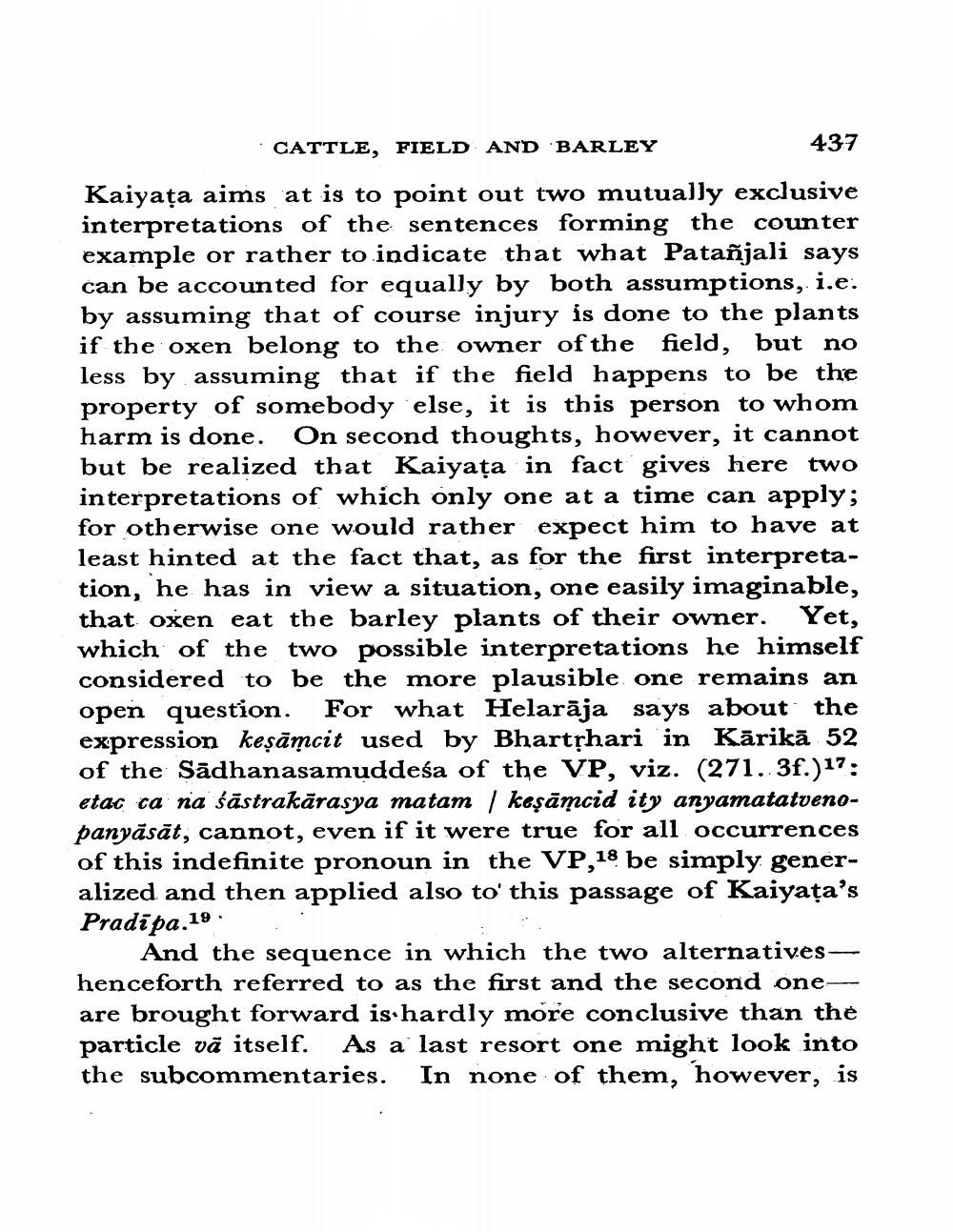Book Title: Cattle Field And Barley Note On Mahabhasya Author(s): A Wezler Publisher: A Wezler View full book textPage 7
________________ CATTLE, FIELD AND BARLEY 437 Kaiyața aims at is to point out two mutually exclusive interpretations of the sentences forming the counter example or rather to indicate that what Patañjali says can be accounted for equally by both assumptions, i.e. by assuming that of course injury is done to the plants if the oxen belong to the owner of the field, but no less by assuming that if the field happens to be the property of somebody else, it is this person to whom harm is done. On second thoughts, however, it cannot but be realized that Kaiyața in fact gives here two interpretations of which only one at a time can apply; for otherwise one would rather expect him to have at least hinted at the fact that, as for the first interpretation, he has in view a situation, one easily imaginable, that oxen eat the barley plants of their owner. Yet, which of the two possible interpretations he himself considered to be the more plausible. one remains : open question. For what Helarāja says about the ssion kesāmcit used by Bhartrhari in Kārikā 52 of the Sādhanasamuddeśa of the VP, viz. (271.3f.)17: etac ca na śāstrakārasya matam / koşāmcid ity anyamatatvenopanyāsāt, cannot, even if it were true for all occurrences of this indefinite pronoun in the VP,18 be simply generalized and then applied also to this passage of Kaiyaţa's Pradipa.19 And the sequence in which the two alternatives - henceforth referred to as the first and the second oneare brought forward is hardly more conclusive than the particle vā itself. As a last resort one might look into the subcommentaries. In none of them, however, isPage Navigation
1 ... 5 6 7 8 9 10 11 12 13 14 15 16 17 18 19 20 21 22 23 24 25 26 27 28 29 30 31 32 33 34 35 36 37 38 39 40 41 42 43 44 45 46 47
